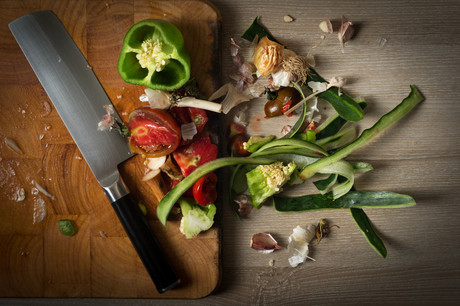Dining in causes less food waste

Not everyone enjoys the same foods, so it comes as no surprise that food waste is higher when consumers dine out or eat boxed lunches than when they cook for themselves.
Research from the Ohio State University found that when adults choose their own meals, only 3% of that food is wasted compared to 39% waste from boxed lunches.
In the United States, between 25 and 40% of food is wasted, but reducing the amount of food left on plates would consequently decrease the amount of food going to landfills. This is why ‘plate waste’ has been the focus of many food waste initiatives.
Brian Roe, lead author of the study and a professor of agricultural, environmental and development economics at Ohio State, suggested that limiting waste could also be achieved using alternative methods at home, such as meal planning.
Previous studies that have examined plate waste in dine-out settings in the United States, such as school cafeterias and buffets, found greater waste than Roe and his colleagues, who focused on the daily eating habits of adults in free-living conditions.
“When you’re making your own plate, you’re taking no broccoli or a little broccoli depending on what you like, unlike in a school cafeteria where the broccoli is there whether you want it or not,” he explained.
In order to track food waste, researchers asked 50 participants to take pictures of the food on their plate before and after every meal for a week using a smartphone. They also looked at the impact of a controlled versus a home environment by getting participants to dine in a lab setting on two separate occasions, offering them food including a lunchmeat sandwich, biscuits, pretzels, a fruit cup and a beverage of their choice.
Published in the journal PLOS ONE, they found that beverages (particularly soft drinks) and grain-based foods, such as hamburger buns, made up the majority of wasted food.
Therefore, understanding consumer habits and enforcing preventative measures is an important step in reducing food waste. The researchers concluded that eating food before it spoils, meal planning and re-using leftovers are all useful methods.
“Better meal planning is a good place to start,” Roe said. “Coming up with a recipe for the leftovers that your family and your kids will actually eat is the next step.”
Large portion sizes or extra servings of food were also pinpointed as potential problem areas by study co-author Corby Martin, of the Pennington Biomedical Research Center. He said, “When this happens, people are much more likely to have a lot of plate waste after their meal.”
Returning for second or third helpings of a meal increased consumers’ plate waste by 3.5%. While there was no notable correlation between free-living plate waste and gender, age, race or body mass index, women were found to leave more plate waste in the lab environment where researchers had provided fixed portion sizes.
Roe and his colleagues are building on the popularity of posting food photos to social media by developing the ‘Food Image’ app. This measures food waste from pictures and enables researchers to understand how and why it happens. A pilot project to test the app will begin later this year.
Expanding beyond biscuits: Arnott's acquires Prolife Foods
The Arnott's Group has expanded its 'better-for-you' snacking portfolio with the...
FDA investigates PFAS in seafood
The US Food and Drug Administration (FDA) expands its investigation on per- and polyfluoroalkyl...
Cell-cultured quail moving closer to Australians' plates
FSANZ is undertaking a second round of consultation on a proposed approach to allow cell-cultured...














